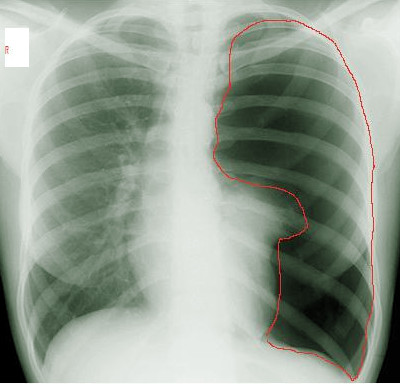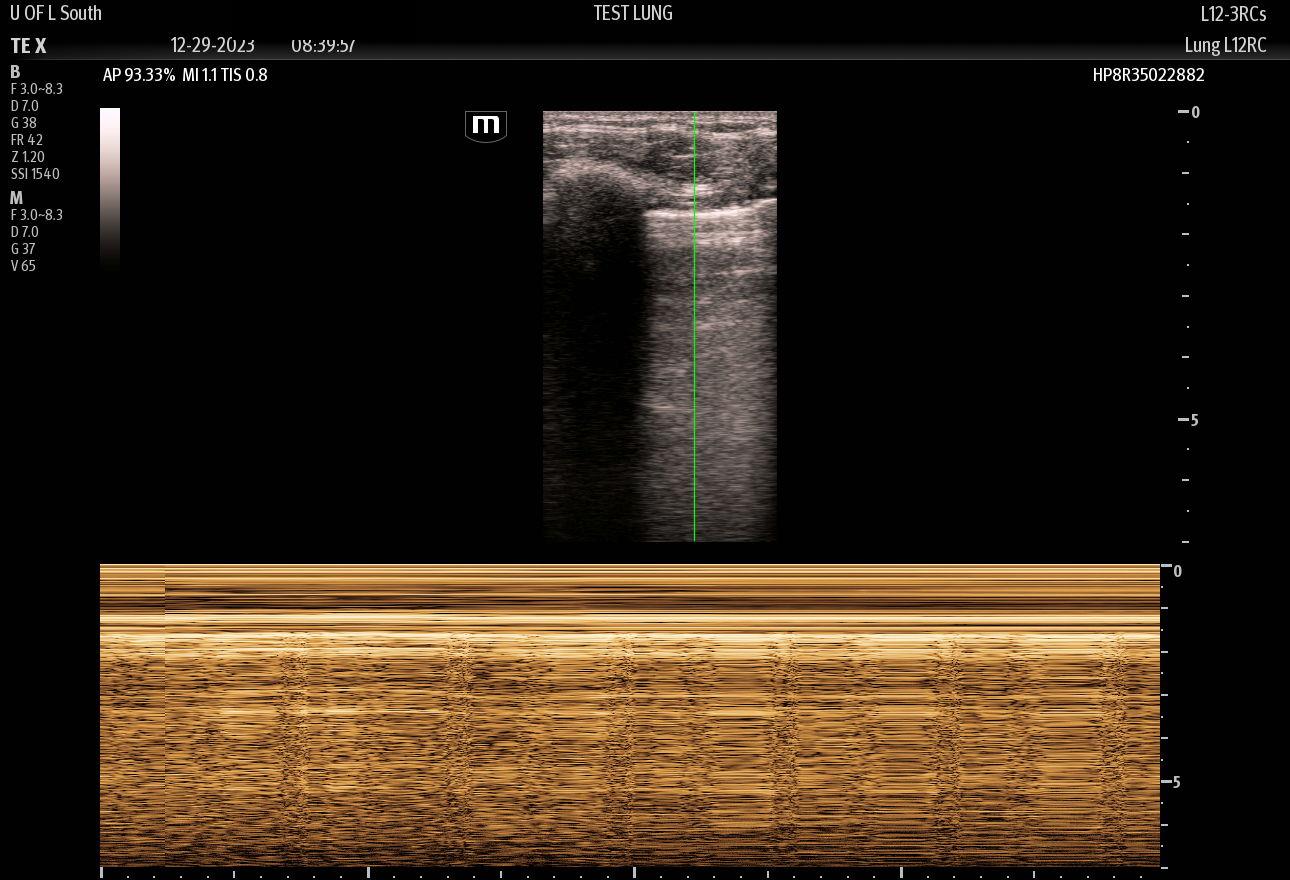[1]
Wernick B, Hon HH, Mubang RN, Cipriano A, Hughes R, Rankin DD, Evans DC, Burfeind WR Jr, Hoey BA, Cipolla J, Galwankar SC, Papadimos TJ, Stawicki SP, Firstenberg MS. Complications of needle thoracostomy: A comprehensive clinical review. International journal of critical illness and injury science. 2015 Jul-Sep:5(3):160-9. doi: 10.4103/2229-5151.164939. Epub
[PubMed PMID: 26557486]
[2]
Abdelrahman H, Atique S, Kloub AG, Hakim SY, Laughton J, Abdulrahman YS, El-Menyar A, Al-Thani H. Needle Decompression Causing Pericardial and Pulmonary Artery Injuries in Patients With Blunt Trauma: Two Case Reports and Literature Review. Journal of investigative medicine high impact case reports. 2023 Jan-Dec:11():23247096231211063. doi: 10.1177/23247096231211063. Epub
[PubMed PMID: 37950344]
Level 3 (low-level) evidence
[4]
Abolnik IZ, Lossos IS, Zlotogora J, Brauer R. On the inheritance of primary spontaneous pneumothorax. American journal of medical genetics. 1991 Aug 1:40(2):155-8
[PubMed PMID: 1897568]
[5]
Minhas MS, Khan KM, Effendi J, Bhatti A, Jamali S. Improvised explosive device bombing police bus: Pattern of injuries, patho-physiology and early management. JPMA. The Journal of the Pakistan Medical Association. 2014 Dec:64(12 Suppl 2):S49-53
[PubMed PMID: 25989781]
[6]
Rodriguez RM, Canseco K, Baumann BM, Mower WR, Langdorf MI, Medak AJ, Anglin DR, Hendey GW, Addo N, Nishijima D, Raja AS. Pneumothorax and Hemothorax in the Era of Frequent Chest Computed Tomography for the Evaluation of Adult Patients With Blunt Trauma. Annals of emergency medicine. 2019 Jan:73(1):58-65. doi: 10.1016/j.annemergmed.2018.08.423. Epub 2018 Oct 2
[PubMed PMID: 30287121]
[7]
Neeki MM, Cheung C, Dong F, Pham N, Shafer D, Neeki A, Hajjafar K, Borger R, Woodward B, Tran L. Emergent needle thoracostomy in prehospital trauma patients: a review of procedural execution through computed tomography scans. Trauma surgery & acute care open. 2021:6(1):e000752. doi: 10.1136/tsaco-2021-000752. Epub 2021 Aug 27
[PubMed PMID: 34527813]
[8]
Osterman J, Kay AB, Morris DS, Evertson S, Brunt T, Majercik S. Prehospital decompression of tension pneumothorax: Have we moved the needle? American journal of surgery. 2022 Dec:224(6):1460-1463. doi: 10.1016/j.amjsurg.2022.09.014. Epub 2022 Sep 24
[PubMed PMID: 36210204]
[9]
Muchnok D, Vargo A, Deeb AP, Guyette FX, Brown JB. Association of Prehospital Needle Decompression With Mortality Among Injured Patients Requiring Emergency Chest Decompression. JAMA surgery. 2022 Oct 1:157(10):934-940. doi: 10.1001/jamasurg.2022.3552. Epub
[PubMed PMID: 35976642]
[10]
Butler FK Jr, Holcomb JB, Shackelford SA, Montgomery HR, Anderson S, Cain JS, Champion HR, Cunningham CW, Dorlac WC, Drew B, Edwards K, Gandy JV, Glassberg E, Gurney JM, Harcke T, Jenkins DA, Johannigman J, Kheirabadi BS, Kotwal RS, Littlejohn LF, Martin MJ, Mazuchowski EL, Otten EJ, Polk T, Rhee P, Seery JM, Stockinger Z, Torrisi J, Yitzak A, Zafren K, Zietlow SP. Management of Suspected Tension Pneumothorax in Tactical Combat Casualty Care: TCCC Guidelines Change 17-02. Journal of special operations medicine : a peer reviewed journal for SOF medical professionals. 2018 Summer:18(2):19-35. doi: 10.55460/XB1Z-3BJU. Epub
[PubMed PMID: 29889952]
[11]
Zengerink I, Brink PR, Laupland KB, Raber EL, Zygun D, Kortbeek JB. Needle thoracostomy in the treatment of a tension pneumothorax in trauma patients: what size needle? The Journal of trauma. 2008 Jan:64(1):111-4. doi: 10.1097/01.ta.0000239241.59283.03. Epub
[PubMed PMID: 18188107]
[12]
Zietlow J, Hernandez M, Bestland A, Musa J, Ferrara M, Berns K, Anderson J, Zielinski M, Aho J. "Decompression of tension pneumothorax in a trauma patient -first use of a novel decompression colorimetric capnography device in human patient". General thoracic and cardiovascular surgery. 2021 Feb:69(2):391-393. doi: 10.1007/s11748-020-01471-7. Epub 2020 Sep 3
[PubMed PMID: 32885324]
[13]
Bøtker MT, Jacobsen L, Rudolph SS, Knudsen L. The role of point of care ultrasound in prehospital critical care: a systematic review. Scandinavian journal of trauma, resuscitation and emergency medicine. 2018 Jun 26:26(1):51. doi: 10.1186/s13049-018-0518-x. Epub 2018 Jun 26
[PubMed PMID: 29940990]
Level 1 (high-level) evidence
[14]
Eimer C, Lorenzen U, Reifferscheid F, Passau N, Helzel K, Schmuck A, Seewald S, Köser A, Weiler N, Gässler H, Hossfeld B, Gruenewald M, Feth M. [Ultrasound diagnostics in prehospital emergency care-do we need a standardized educational approach?]. Medizinische Klinik, Intensivmedizin und Notfallmedizin. 2023 Aug 14:():. doi: 10.1007/s00063-023-01045-4. Epub 2023 Aug 14
[PubMed PMID: 37656173]
[15]
Meadley B, Olaussen A, Delorenzo A, Roder N, Martin C, St Clair T, Burns A, Stam E, Williams B. Educational standards for training paramedics in ultrasound: a scoping review. BMC emergency medicine. 2017 Jun 17:17(1):18. doi: 10.1186/s12873-017-0131-8. Epub 2017 Jun 17
[PubMed PMID: 28623905]
Level 2 (mid-level) evidence
[16]
Bhoil R, Ahluwalia A, Chopra R, Surya M, Bhoil S. Signs and lines in lung ultrasound. Journal of ultrasonography. 2021 Aug 16:21(86):e225-e233. doi: 10.15557/JoU.2021.0036. Epub 2021 Sep 9
[PubMed PMID: 34540277]
[17]
Husain LF, Hagopian L, Wayman D, Baker WE, Carmody KA. Sonographic diagnosis of pneumothorax. Journal of emergencies, trauma, and shock. 2012 Jan:5(1):76-81. doi: 10.4103/0974-2700.93116. Epub
[PubMed PMID: 22416161]
[19]
Park CB, Moon MH, Jeon HW, Cho DG, Song SW, Won YD, Kim YH, Kim YD, Jeong SC, Kim KS, Choi SY. Does oxygen therapy increase the resolution rate of primary spontaneous pneumothorax? Journal of thoracic disease. 2017 Dec:9(12):5239-5243. doi: 10.21037/jtd.2017.10.149. Epub
[PubMed PMID: 29312731]
[20]
Marquette CH, Marx A, Leroy S, Vaniet F, Ramon P, Caussade S, Smaiti N, Bonfils C, Pneumothorax Study Group. Simplified stepwise management of primary spontaneous pneumothorax: a pilot study. The European respiratory journal. 2006 Mar:27(3):470-6
[PubMed PMID: 16507845]
Level 3 (low-level) evidence
[22]
Currie GP, Alluri R, Christie GL, Legge JS. Pneumothorax: an update. Postgraduate medical journal. 2007 Jul:83(981):461-5
[PubMed PMID: 17621614]
[23]
Kuhlwilm V. The Use of Chest Seals in Treating Sucking Chest Wounds: A Comparison of Existing Evidence and Guideline Recommendations. Journal of special operations medicine : a peer reviewed journal for SOF medical professionals. 2021 Spring:21(1):94-101. doi: 10.55460/3G6H-14FD. Epub
[PubMed PMID: 33721314]
[24]
Kheirabadi BS, Terrazas IB, Koller A, Allen PB, Klemcke HG, Convertino VA, Dubick MA, Gerhardt RT, Blackbourne LH. Vented versus unvented chest seals for treatment of pneumothorax and prevention of tension pneumothorax in a swine model. The journal of trauma and acute care surgery. 2013 Jul:75(1):150-6
[PubMed PMID: 23940861]
[25]
Hossain R, Qadri U, Dembowski N, Garcia A, Chen L, Cicero MX, Riera A. Sound and Air: Ultrasonographic Measurements of Pediatric Chest Wall Thickness and Implications for Needle Decompression of Tension Pneumothorax. Pediatric emergency care. 2021 Dec 1:37(12):e1544-e1548. doi: 10.1097/PEC.0000000000002112. Epub
[PubMed PMID: 32925707]
[26]
Henry M, Arnold T, Harvey J, Pleural Diseases Group, Standards of Care Committee, British Thoracic Society. BTS guidelines for the management of spontaneous pneumothorax. Thorax. 2003 May:58 Suppl 2(Suppl 2):ii39-52
[PubMed PMID: 12728149]
[27]
Kepka S, Dalphin JC, Pretalli JB, Parmentier AL, Lauque D, Trebes G, EXPPI study group, Mauny F, Desmettre T. How spontaneous pneumothorax is managed in emergency departments: a French multicentre descriptive study. BMC emergency medicine. 2019 Jan 11:19(1):4. doi: 10.1186/s12873-018-0213-2. Epub 2019 Jan 11
[PubMed PMID: 30634911]
[28]
Bou Zein Eddine S, Boyle KA, Dodgion CM, Davis CS, Webb TP, Juern JS, Milia DJ, Carver TW, Beckman MA, Codner PA, Trevino C, de Moya MA. Observing pneumothoraces: The 35-millimeter rule is safe for both blunt and penetrating chest trauma. The journal of trauma and acute care surgery. 2019 Apr:86(4):557-564. doi: 10.1097/TA.0000000000002192. Epub
[PubMed PMID: 30629009]


